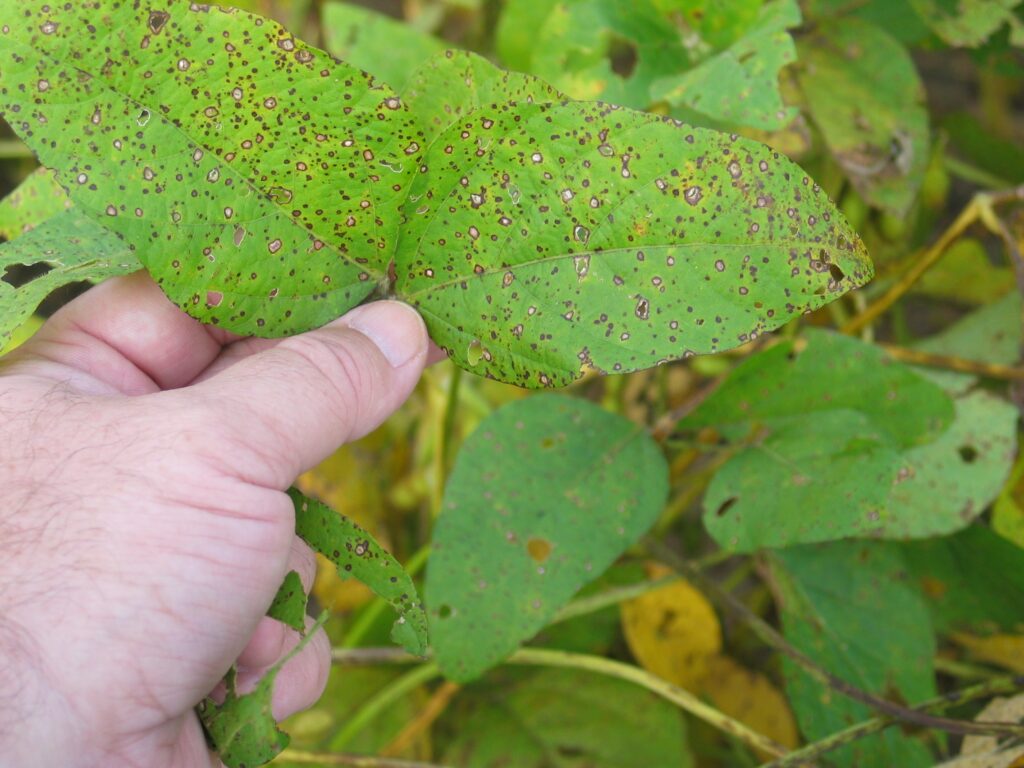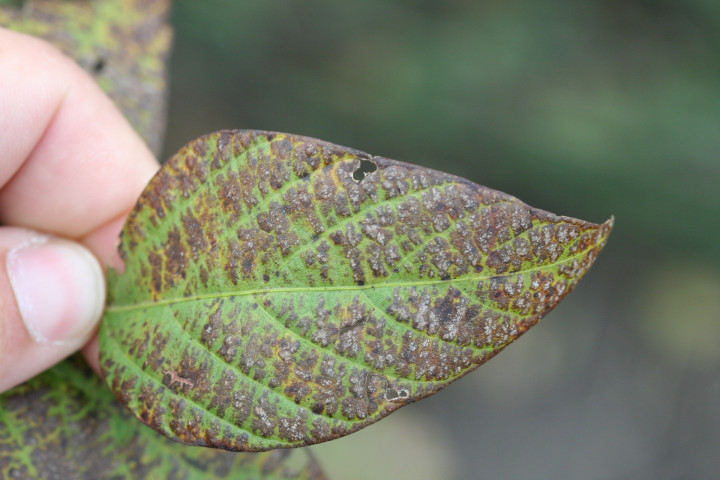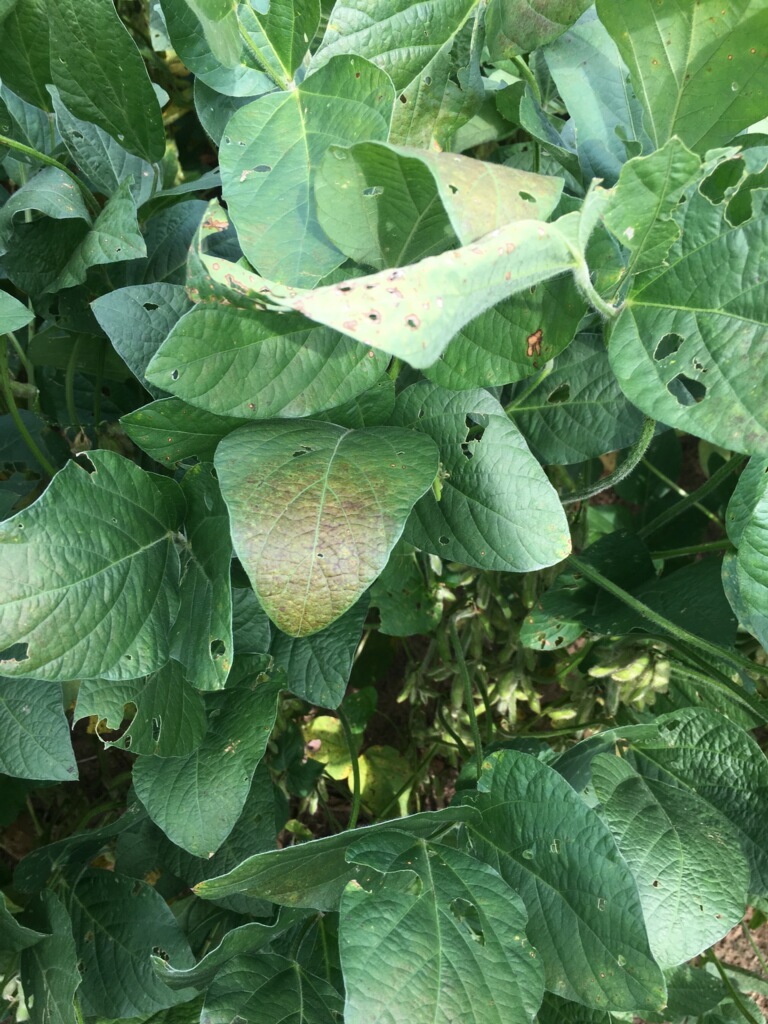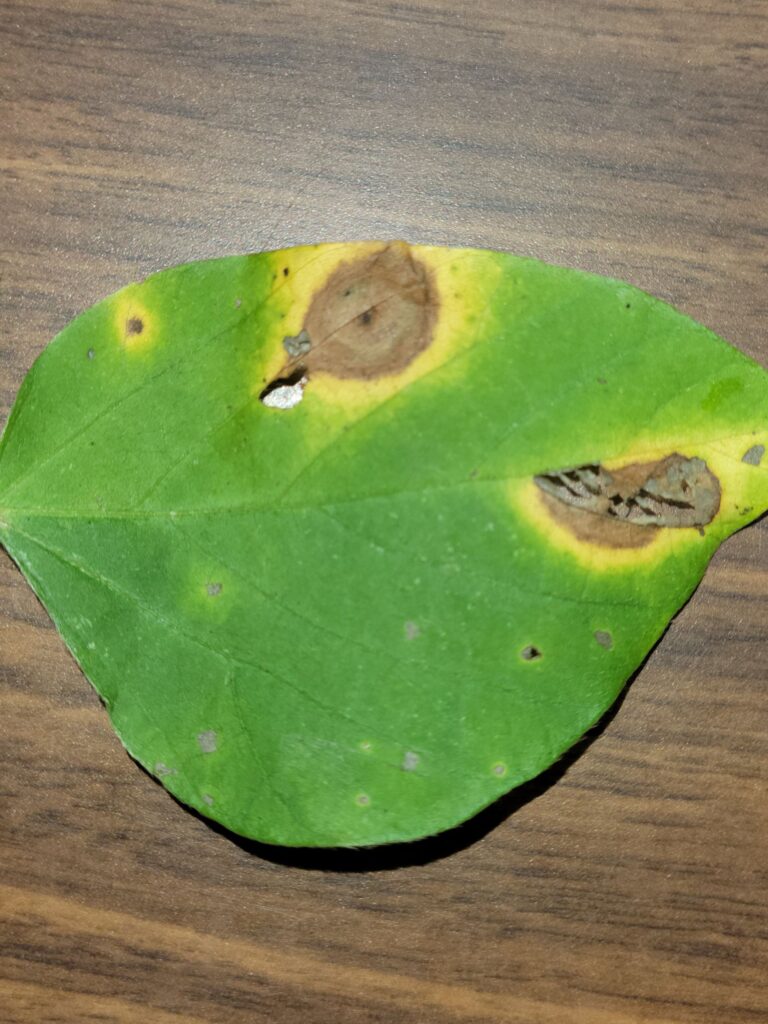The majority of the soybean crop, planted early or late, is beginning to bloom or is now setting pods. This is the appropriate time in the growing season for growers to make a decision on spraying a fungicide on soybeans. The common questions are when to spray, what to spray, and whether it will be profitable to spray.
The Crop Protection network puts out a list of fungicides that have been tested on soybean in multiple locations and rated for efficacy on 8 different diseases. This material is attached here for your convenience. One of the 8 diseases they rate for Aerial web blight, is not common in South Carolina. So do not be concerned with that diseases unless it has been confirmed in your fields by your County Agent.
One of the most common diseases that growers use to trigger a fungicide spray in South Carolina is Asian Soybean Rust. ASR does not overwinter in SC; therefore, weather patterns and favorable conditions must bring it in from the Gulf Coast. Clemson Extension does a good job scouting and sending out alerts on whether or not ASR has been found in SC from July through October. If you are not on the “Asian Soybean Rust Newsletter” mailing list and would like to be please contact your local agronomy agent.
With that being said, we do not see ASR every year, and automatic sprays for ASR should not be part of your program. As of today Asian Soybean Rust has not been found in South Carolina or Georgia.
There are other diseases that often come under consideration. Frogeye leaf spot is common on soybeans in South Carolina. Most varieties have good resistance to Frogeye leaf spot but more pathogenic races do exist and can build to a high enough level to warrant spraying a fungicide.
Target spot has become one of the diseases we must be on the lookout for. If you see any Target spot in your field you should strongly consider spraying one of the fungicides rated F (fair) or F-G (good). Most of the fungicides are listed as “NL” or “not labeled for this disease”. Most often they have not been tested for the disease, in this case Target spot, so predicting its efficacy is difficult.
Another disease that has become more important recently is Cercospora leaf blight. If you are seeing this disease and any type of afternoon thunderstorm or wet weather is predicted you might want to spray. Unlike Target spot there are lots of fungicides rated but there are several strains of the disease in the fields. Ratings can be highly variable going from poor to good depending upon the location where it was tested.
Remember many of the fungicide labels only allow spraying up until the growth stage 5/6 progression. If you have solid yields but we are entering a “wet period” such as a hurricane you may want to spray for pod and stem blight to protect those pods and seeds which is where your profit is located. Again, there are a limited number of fungicides with high ratings against this disease.
Fungicides normally give 2 to 3 weeks of protection after spraying. We typically see fungicide applications applied at R3 or the beginning of pod development. The hope is that this will protect pods and foliage through R6 or full seed. This time frame is generally around 30-35 days. So if your real concern is protecting seed you will need to either spray twice or spray at the end of R-5 for best pod and seed protection.
Fungicides have no effect on the development of “Southern blight (white mold)” or “CBR (red crown rot).
The last thing that a farmer needs to do is spray at R3 when there is zero disease in the crop or spraying a product that is not effective for the disease that they are targeting or currently are finding in the field.
The following images are of Frogeye Leaf Spot, Cercospera Leaf Blight, Cercospera Leaf Blight, and Target Spot.




